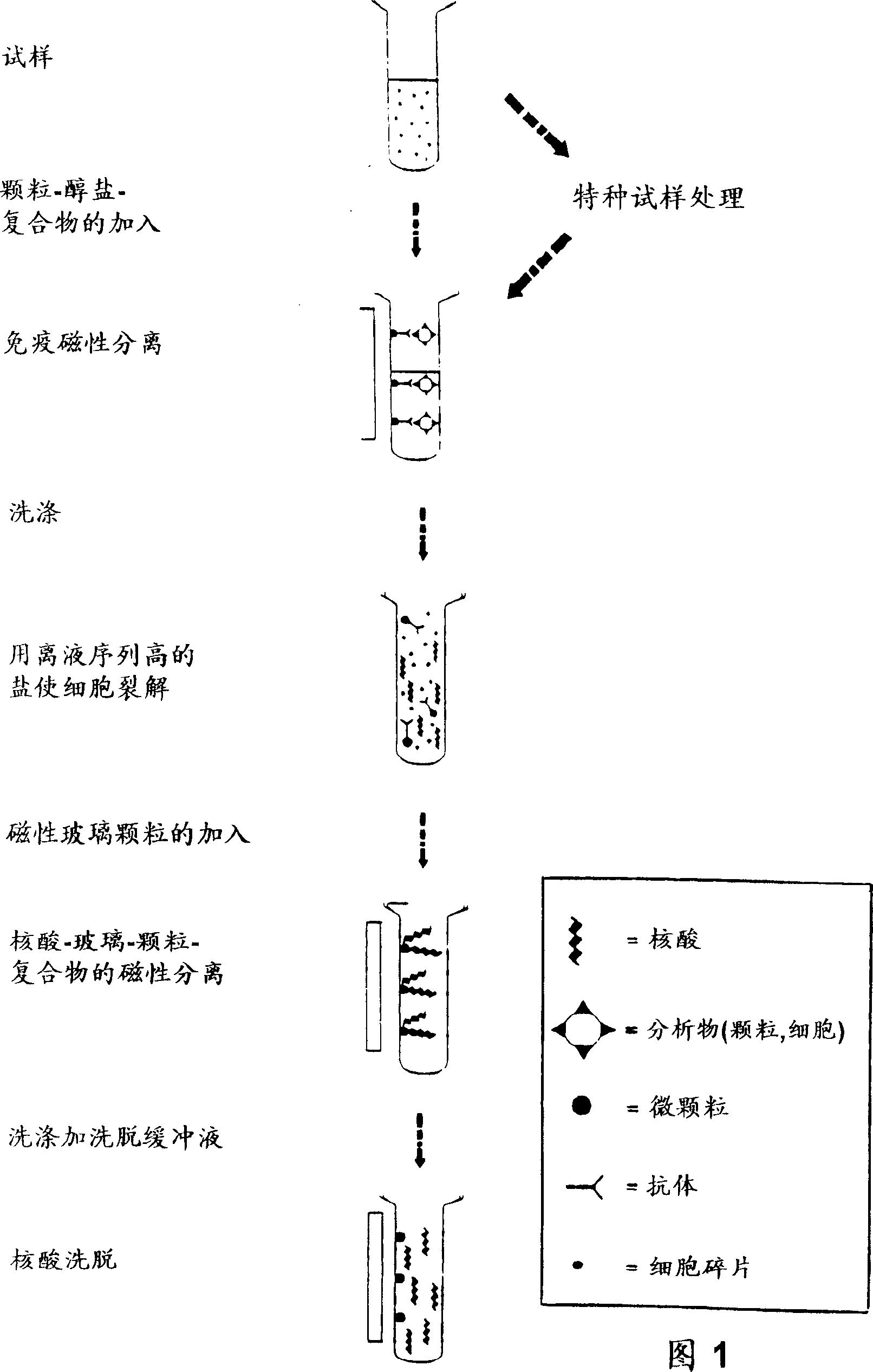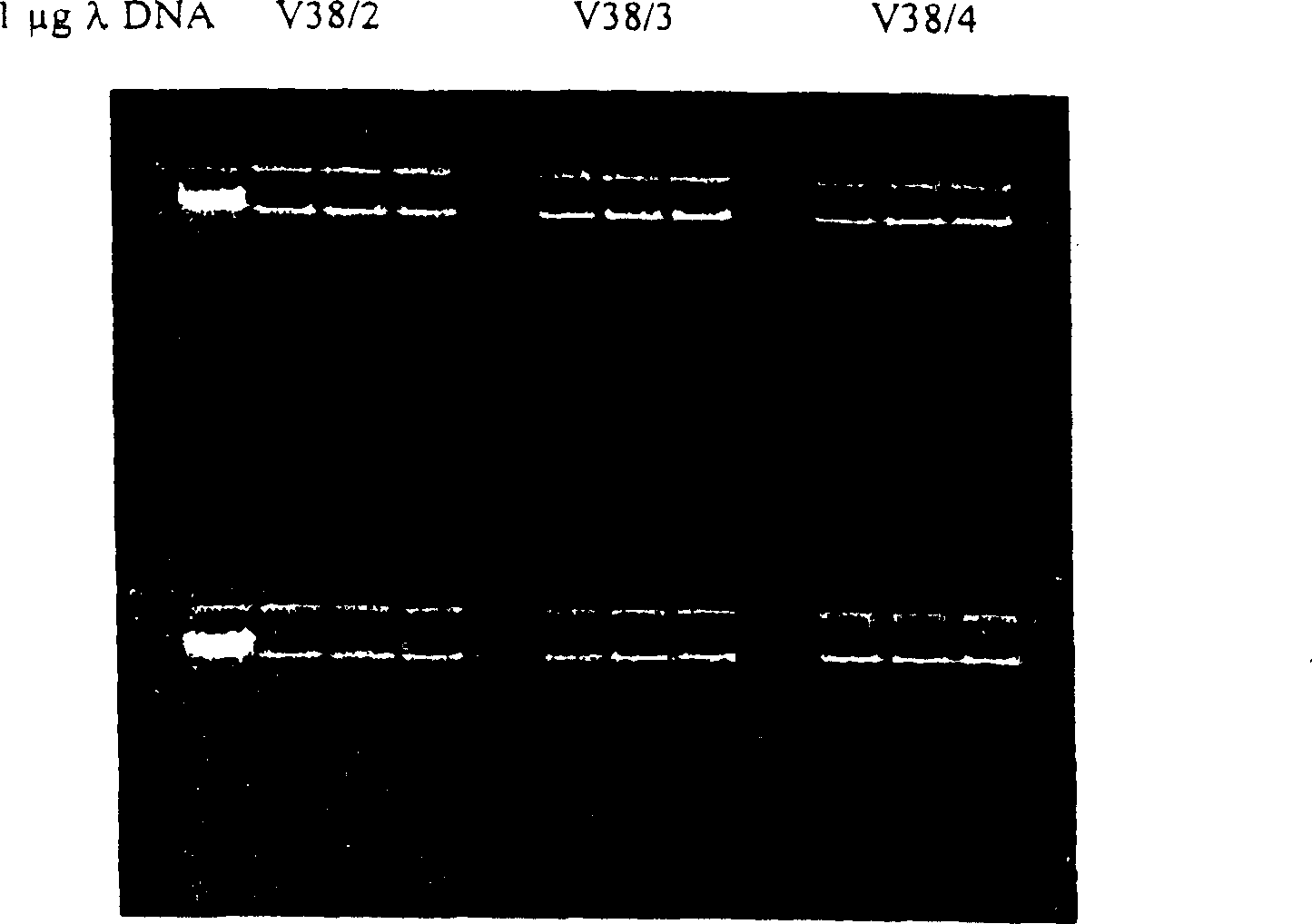Enzyme reaction method for nucleic acid and composition for separating nucleic acid
An enzymatic reaction and nucleic acid technology, applied in the field of nucleic acid, concentrating biological substances and transferring them from high-concentration salt solution to low-concentration salt solution, which can solve the problem that it cannot be used to remove inhibitors, and achieve the effect of easy preparation
- Summary
- Abstract
- Description
- Claims
- Application Information
AI Technical Summary
Problems solved by technology
Method used
Image
Examples
example 1
[0070] Preparation of magnetic particles of the present invention
[0071] Six sols were used. The sol was prepared as follows:
[0072] Sol 1 (SiO 2 :B 2 o 3 =7:3):
[0073] Synthesis was carried out in a 250 ml round flask with constant agitation.
[0074] 86.6ml tetraethylorthosilicate
[0075] +7ml absolute non-denatured ethanol
[0076] +14.1ml 0.15M HCl
[0077] A two-phase mixture was produced. Stir at room temperature until single phase. Add +37.8ml trimethyl borate drop by drop
[0078] The sol was then left at 50°C for 2 hours. join in
[0079] +14.1ml 0.15M HCl
[0080] Sol 2 (SiO 2 :B 2 o 3 =4:1):
[0081] Synthesis was carried out in a 250 ml round flask with constant agitation.
[0082] 100.5ml tetraethylorthosilicate
[0083] +7ml absolute non-denatured ethanol
[0084] +16.3ml 0.15M HCl
[0085] A two-phase mixture was produced. Stir at room temperature until single phase. Add +25.6ml trimethyl borate drop by drop
[0086] The sol was th...
example 2
[0126] Preparation of GMP1, GMP2, GMP3 and GMP4
[0127] GMP1, GMP2, GMP3 and GMP4 are different batches of pigments prepared under the following conditions from sol 1 (example 1) by the process described in example 1:
[0128] parameters
example 3
[0130] Pretreatment of human whole blood PCR samples using magnetic glass particles
[0131] nucleic acid isolation
[0132] 3 parts of glass magnetic particles (GMP2-4), each 10 mg into a micro test tube. The exact sample weights are given in Table 1. Triplicate determinations were performed.
[0133]40 μl proteinase K (20 mg / ml, made by lyophilization) was pipetted into 200 μl thawed whole blood and mixed immediately. Next, 200 μl of binding buffer (6M guanidine-HCl, 10 mM trimethylaminomethane-HCl, 10 mM urea, 30% Triton X-100, pH 4.4) was added and mixed, followed by incubation at 70° C. for 10 minutes. 200 μl of isopropanol was added and the formulation was mixed for 10 seconds in a vortex mixer. The samples were left at room temperature for 20 minutes and then mixed again for 10 seconds. Magnetic separation This step was performed for at least 30 seconds in a magnetic particle separator from Boehringer Mannheim (ID# 1 641 794). Supernatants were removed and analyze...
PUM
 Login to View More
Login to View More Abstract
Description
Claims
Application Information
 Login to View More
Login to View More - R&D
- Intellectual Property
- Life Sciences
- Materials
- Tech Scout
- Unparalleled Data Quality
- Higher Quality Content
- 60% Fewer Hallucinations
Browse by: Latest US Patents, China's latest patents, Technical Efficacy Thesaurus, Application Domain, Technology Topic, Popular Technical Reports.
© 2025 PatSnap. All rights reserved.Legal|Privacy policy|Modern Slavery Act Transparency Statement|Sitemap|About US| Contact US: help@patsnap.com



